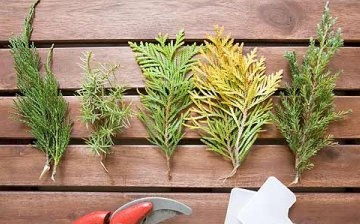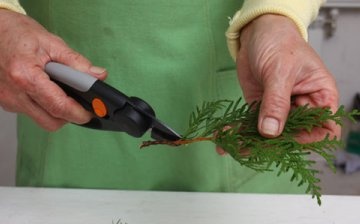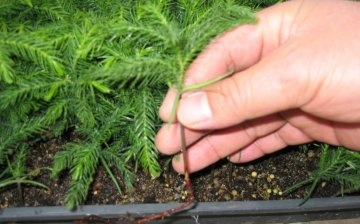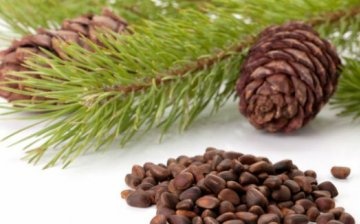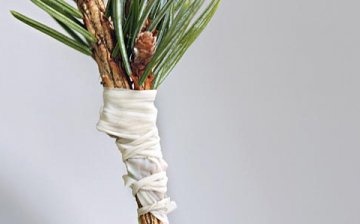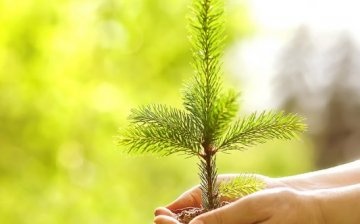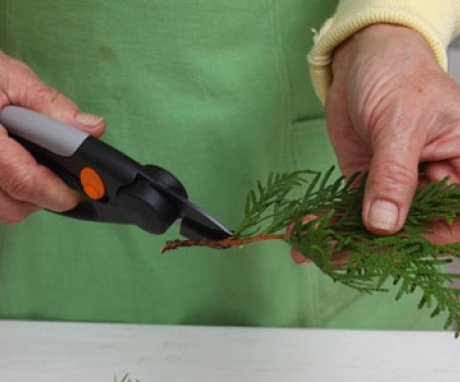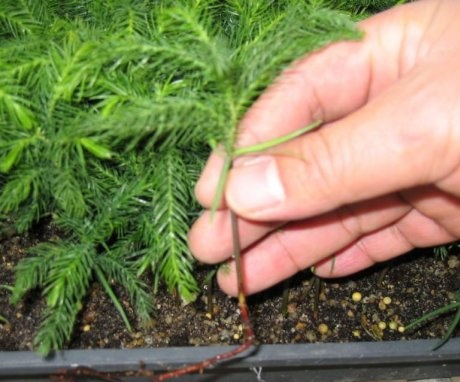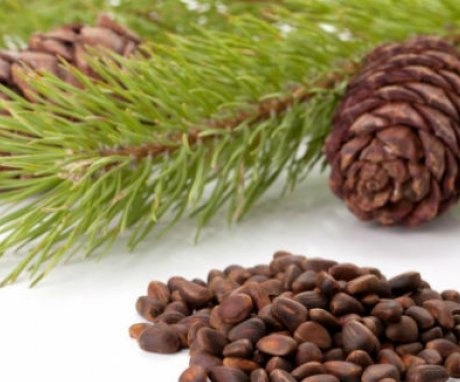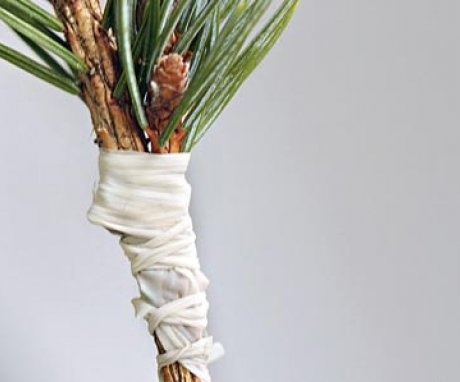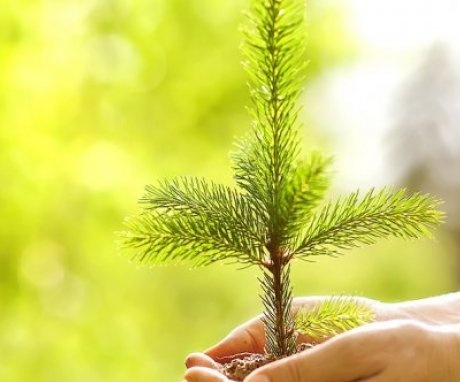Breeding conifers: best methods and rules
Conifers and shrubs are among the best decoration for any garden: they are unpretentious to maintain, durable, decorative throughout the year. This is not to mention the benefits that these plants bring to human health, clearing the air of dust, supplying it with phytoncides.
A variety of conifers with an extraordinary crown shape, peculiar color and type of needles, unequal growth, pushes many gardeners to reproduce them for further use in various design solutions.
Content:
- Propagation of conifers by cuttings
- Seed propagation method for conifers
- Reproduction of conifers by grafting
- Other breeding methods for conifers
Propagation of conifers by cuttings
The most reliable breeding method for conifers such as thuja, juniper, is cuttings, which, depending on the time of the holding, are divided into summer and winter.
The main thing for this method is the procurement of material, which is taken from young trees, at least three years old. Shoot selection is carried out from the top of the plant, where the growth point of the apex has normal development and is not damaged. For the successful rooting of cuttings, it is important to pay attention to the choice of the correct time for harvesting them. When implementing the green, summer cuttings this will be from the end of the last month of spring to the first days of July, taking into account climate conditions. Lignified shoots are cut in the early morning or on a cloudy day, then placing them in a container of water in a room where cuttings from five to ten centimeters long are prepared from them. The branches must be with a heel, a piece of last year's wood.
The rooting of the cuttings must be stimulated with drugs such as Heteroauxin, a low concentration indolylbutyric acid solution in accordance with the instructions.
Prepared cuttings are planted in a greenhouse, where the air temperature will be in the range from 21 to 26 degrees Celsius, and the humidity will be about eighty percent. Requirements for the soil: at the bottom about 30 centimeters of drainage in the form of pebbles, rubble, the upper part - coarse sand about twenty centimeters in thickness. It is a good idea to add vermiculite, chopped sphagnum moss or chopped sifted ephedra bark to such soil. By heating containers with crops from below, it is possible to increase the temperature in the substrate by 1-2 degrees compared to air, which will have a beneficial effect on the growth of cuttings.
Frames are placed on a greenhouse with coniferous shoots, which on hot days are covered with newspapers, gauze from bright sunlight in order to avoid burns of the plant.
The basic rules for caring for cuttings include:
- The soil substrate is moistened as it dries. But excessive moisture is terrible for the cuttings, it threatens them with death. But not long-term overdrying of the soil does not harm the sprouts so much.
- When the cuttings decay, they are removed to avoid general infection.
- Loosening the plantings will allow the branches to take root faster.
- One or two months after planting, when the cuttings are rooting, they are transferred to prepared beds, mulching the soil around the plantings with fallen needles.
- For the period of winter cold, seedlings of coniferous trees must be covered, opening only in spring. For this purpose, for weak sprouts, frame boxes are used, covered with polyethylene or covered with spruce branches. In the thaw, the plantings are aired, and before severe frosts, they are additionally insulated.
- To avoid infection of young plants with rot and other diseases, they must be sprayed with a solution of potassium permanganate, or fungicidal preparations.
Winter grafting involves cutting completely lignified shoots from a perennial plant that survived the first frosts in February-March. With this method, the percentage of rooting increases. Root system coniferous sprouts will be strong, subject to the rules for the selection of cuttings.
Seed propagation method for conifers
Almost all conifers reproduce seeds, although for some species this method is ineffective. And here fir, pine, larch, spruce can only be grown by planting seeds. It is this reproduction that helps to fully preserve the maternal characteristics of wild species of conifers.
Coniferous seeds are characterized by the content of a large amount of oils, so they cannot be stored for a long time: they quickly lose their germination when the integument is disturbed.
The seed method of reproduction requires certain skills during its application:
- In order for the seeds to germinate, it is necessary to break their hard, dense shell. For this purpose, the seed is mixed with sand and ground thoroughly. The procedure is carried out just before sowing.
- The second procedure for seeds is stratification, in which they are mixed with clean coarse sand or ground moss, then placed in boxes for germination. The planting containers are filled with soil consisting of one third of compost soil, the rest is divided equally between peat and sand. Pots with crops are selected in a dark room with a temperature no higher than twenty-two degrees above zero, or it is better to leave them for a while in the refrigerator, basement, where temperatures do not fall below zero, reaching no higher than 10 degrees. During stratification, it is necessary to mix the seeds from time to time, change the substrate, monitor the moisture content, without bringing the soil to drying.
- As soon as sprouts appear, the seeds are transferred to open beds, but before that they are gradually taught to light.
- For some conifers - larch, spruce, pine - fit germination under a layer of snow. In this case, the boxes with the seeds are put out on the street, where they are covered with a mass of snow. And in the spring, they dig containers with material into the ground to the ground. The only obstacle to such a procedure will be mice, which can enjoy delicious seeds with pleasure.
During the first year of life, seedlings develop slowly, with difficulty building up the root system. But then they grow quickly, without fear of transplantation, root pruning. Young trees are transplanted, when their active growth is slowed down, to a permanent place during the summer in bad weather.
Soils for conifers require loose, loamy or sandy soils.
Seedlings do not require special feeding, being content with adding fresh soil. Occasionally, with the growth of shoots, a weak fermented solution of manure or a low concentration of mineral fertilizers can be applied.
For planting a site with wild conifers, only the seed reproduction method is suitable.
Reproduction of conifers by grafting
The grafting method of propagation is typical for those varieties of trees that are poorly propagated by seeds and cuttings or to obtain peculiar forms of plants. In the role rootstock for grafting pine, spruce, three-, five-year-old seedlings serve, and the scion is taken from above the fruiting crown. Cuttings are harvested either in the first month of spring, or in the second half of summer, and grafting is carried out when the summer passes through the middle. Before the procedure, the early prepared scion is stored in the cellars.
Vaccination rules:
- Before the grafting procedure, cuttings are taken from the top of the shoot no more than 10 centimeters long, cutting off both ends with a wedge and clearing it of needles.
- After splitting the apical part of the shoot to a depth of one and a half centimeters, insert the cutting into the split so that the layers of cambium coincide in the branches of the rootstock and scion.
- After the procedure, the strapping of the vaccination site is made with a thick thread of wool, and in hot weather the wound is closed with caps folded of paper.
One hundred percent survival rate gives graft, when a layer of cambium, the scion is applied to the cambial layer of the rootstock, cutting off strips of bark from them 4 to 6 centimeters long. The junction is tightly bandaged.
Cuttings usually take root within a month, then only the bandage is removed, and the top of the rootstock is cut off so that the scion grows vigorously. Subsequently, all whorls are removed from the tree. The method of reproduction by grafting requires certain qualifications and professionalism.
Other breeding methods used for ephedra
Another breeding method for such species of conifers as cypress, yew, is dividing a bush... This method is good for young plants, for which the procedure of preliminary deepening or hilling of branches located below, near the ground, is carried out.
Horizontal layers for propagation are strongly bent so that they completely lie on the soil, and are added dropwise. The place of connection with the ground must be fixed with a load or a piece of thick wire. For quick rooting of the twig, it is necessary to monitor the moisture content of the soil in the connection zone, protecting it from overdrying. As soon as six months later, the stalk takes root, you can separate it from the mother, but this must be done gradually, slightly trimming the layers of the independently developing twig.
The aerial method of propagation does not always bring positive results, but it is completely safe for the mother plant.
For its implementation, a pot of soil consisting of moss and coarse sand is fixed at a fork in a small branch. For rooting, the place where the soil and the bottom of the branch are connected is pulled together by cutting off the bark there. Separate the stalk from the mother branch after it takes root.
The effectiveness of the choice of the breeding method depends on the variety of the coniferous plant, its characteristics, the practical skills of the gardener.
More information can be found in the video:



